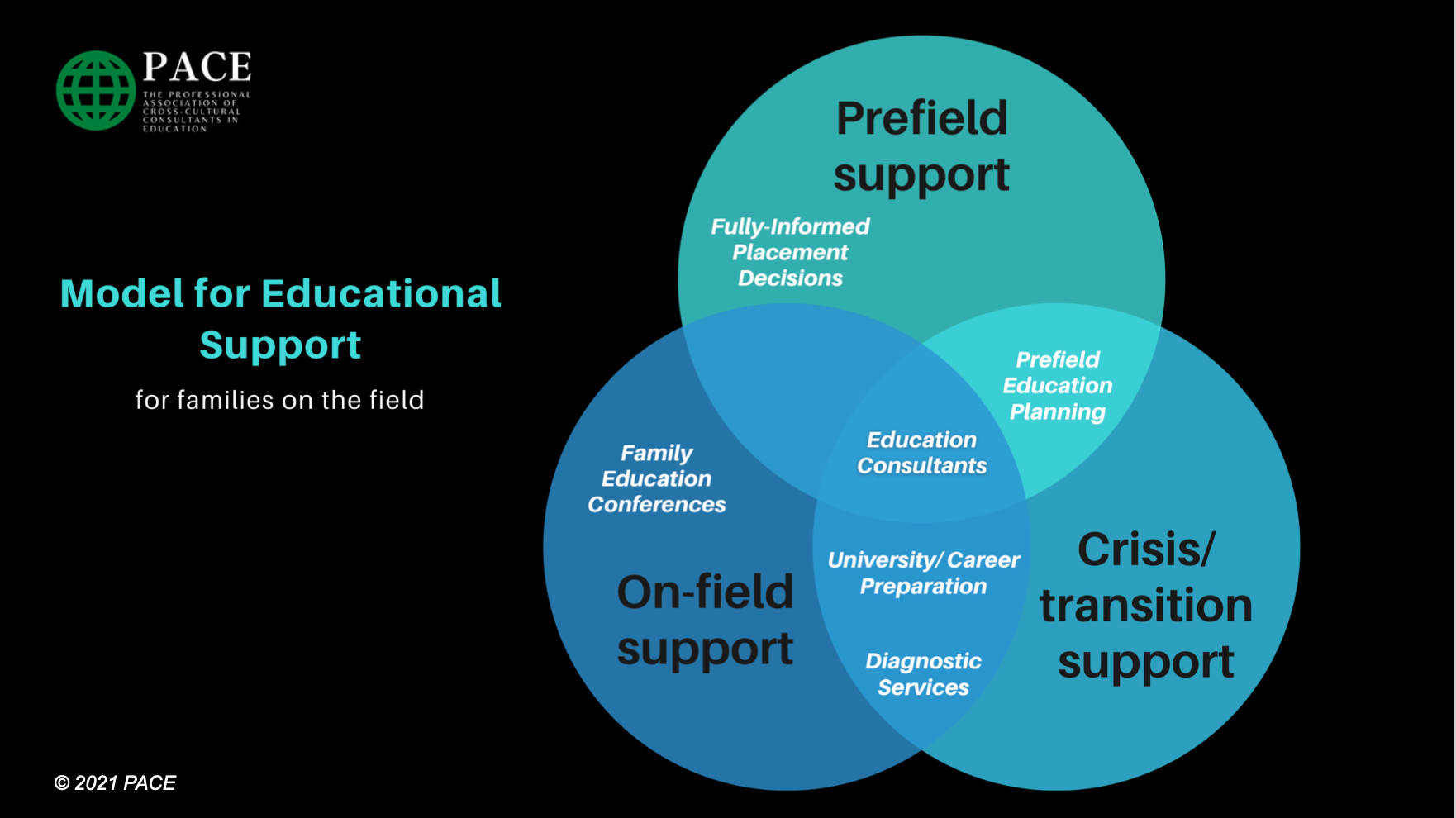In March, many education consultants gathered in person at the MK Education Summit near Atlanta…
Multilingualism as a Bridge of Opportunity
[author][author_info]Flossie Epley has been with TEAM since 1981. She is founder and director of School Support Services (SSS) at Christian Academy in Japan (CAJ). For thirty years SSS has been offering consultancy, resources, and programs to home schoolers and schools affiliated with CAJ in Japan. Flossie and her husband Russ have two adult children and one grandchild.[/author_info] [/author]
ShinHae Kim thinks about academic subjects in English. She develops most of her friendships in Japanese, and she worships in Korean. Kim elaborates, “Many people think that languages are organized in cabinet form, taking out necessary details from each cabinet each time. But in reality, my head works more like whipped cream. The ingredients are mixed in my head, and they are not so organized as people imagine. But the wonder of it is that it’s OK. It works perfectly fine.” Kim successfully navigates her multilingual environment. Is she just brilliant and fortunate? Do we do all we can for students like her?
The advantages of multilingualism are frequently rehearsed. Opportunities in the worlds of ministry and business are obviously expanded by knowing more than one language. Yet, it is not always smooth sailing for schools when multilingual children enter our classrooms. What challenges face multilingual students in a TCK school or an international school? How can schools respond to the needs of multilingual students?
1. Challenge of Matriculation
Some children do not have sufficient language skills to be accepted into a TCK school or an international school.
- Provide preparatory classes for students seeking admission.
- Provide resources for parents who want to work with their own children to prepare them for the admission tests.
- Guide families to outside sources of tutoring.
2. Challenge of Unrealistic Parental Expectations
Some parents do not have a realistic understanding of what enrolling in a TCK school or an international school will require of their children or how it will change their child’s thinking and their family dynamics. Specifically, parents may expect mastery in their native language, the host language, and the school language. Some parents are distraught when their child becomes more comfortable praying and discussing spiritual issues in the language of the school rather than in their native language.
Talk to prospective parents about the joys and pitfalls of being a multilingual student at the school and the possible effects these will have on their family.
- Provide parent education seminars that present the school’s expectations for parents and that offer ideas about how parents can encourage their children without burdening them.
- Provide an opportunity for parents to listen to multilingual students share their experiences and coping strategies. Alumni or other multilingual adults in the community could also be invited to share unrealistic parental expectations they have encountered.
3. Challenge for Parents to Understand Communication from the School
Parents who are not fluent in the language of the school may not fully understand written communication from the school or be able to communicate effectively with teachers.
- Provide translation of documents and notices in the dominant languages of school families.
- Appoint staff or PTA liaisons, who understand the workings of the school, to answer questions in each major language represented in the school.
- Provide translators for parent-teacher conferences.
- Provide parent buddies for each new parent.
4. Challenge for Parents and Students in Understanding the School System
Parents and students may not understand the framework of Western education (or whatever type of education the school is offering), and therefore the language used is not understood even when the individual words are familiar. For example, a person may understand the words scholastic achievement test but not understand that college admission in most U.S. colleges is based partially, but not wholly, on SAT or ACT scores. While a parent from India may consider 65 percent an average score, a father from the United States who sees that score may wonder if his child will pass.
- Provide a brochure for parents to give them an overview of what a Western education (or whatever type of education the school is offering) entails.
- Arrange for a special information session for parents. Explain the philosophy, values, and general workings of the school. Older students could also be invited to the session. If possible, provide interpretation.
- Provide buddies for new students to explain how things work. Preferably, buddies should be students who are approachable and who know what is not inherently understood.
- Provide a list of frequently used school terms (with definitions) and acronyms.
- Provide a booklet that students can read before school begins for an explanation of how the school operates (what a person needs to know to understand the student handbook that all students receive).
- Arrange for a multilingual staff person to share with students personal-adjustment stories and appropriate coping strategies. This person can serve as both a role model and a potential resource for students.
5. Challenge of Limited Vocabulary
Multilingual students may have a limited vocabulary that does not include synonyms or multiple definitions, thus leading to misunderstandings. For example, if an American teacher tells an overweight Japanese student that he is smart, he may feel insulted since to him a “smart” student is a slender one.
- Target vocabulary development in ESL classes.
- Use a school assembly (perhaps with humorous skits) to acquaint all students with common language misunderstandings. It is hoped that this will increase understanding and grace giving.
- Have ESL teachers go over the school rules and expectations to ensure understanding.
6. Challenge of Lack of Mastery in Any Language
Some students have basic understanding of several languages but do not have mastery of any language.
- Equip teachers to recognize the difference between ESL students who have a strong base in one language and ESL students who struggle in all languages, in order to help teachers pursue early intervention with needy students.
- Arrange for the ESL, English, and host language teachers to collaborate regularly to provide another mechanism for insuring that children do not fall through the cracks.
- Work with parents to help them consider the future, make a decision about which language to master, and develop a plan to reach the goals chosen.
7. Challenge of Teachers Lacking Understanding of Multilingual Students
Some teachers have little cross-cultural understanding, while others mistakenly think that understanding the host culture will equip them to communicate well with all nonnative speakers from a variety of countries. Some teachers have little exposure to the needs of multilingual students in general.
- Provide staff training sessions to promote understanding of the needs of multilingual students.
- Provide staff training sessions to promote understanding of gestures and nonverbal communication characteristics that are typical of the various cultures represented in the school.
- Provide relevant books for the school’s staff development library.
- Encourage staff to take classes in understanding the needs of multilingual students.
- Arrange for an alumnus (or a brave student) to share with teachers what helped him or her thrive as a multilingual student.
8. Challenge of the School’s Scholastic Level Being Unattainable for Some Multilingual Students
Many small TCK schools and international schools aim all classes at a high scholastic level that is unattainable for students who do not have grade-level language competency and who are not apt to attend a competitive college.
- Offer less rigorous curriculum options for students who would benefit from these.
- Be flexible in graduation requirements, allowing online courses, homeschooling, and life and work experiences to lead to a diploma.
- Keep abreast of the demographics of the school and align the offerings to student needs.
9. Challenge of Third Culture Kid Issues for Multilingual Students
In addition to juggling several languages, the multilingual student also deals with third culture kid (TCK) challenges.
- Regularly provide TCK seminars for parents and students.
- Stock the school library with books on TCK issues.
- Encourage students who are doing research to pursue study in TCK issues and share the findings with other students and parents.
Students may need to adjust to living away from home at the same time they adjust to a new school language and culture (and possibly a new country). These adjustments include eating unfamiliar food, having a roommate, seeing family infrequently, and becoming a TCK.
At Christian Academy in Japan, we are growing in our understanding of how to meet the needs of all our students, most of whom communicate in more than one language. With such varied needs, we cannot adopt every idea we have, but we can incorporate step-by-step changes that foster a positive learning environment.
What can you do to make your school welcoming to multilingual learners?
Reprinted with permission from ACSI’s “World Report”
© 2012-2023 PACE
All rights reserved


